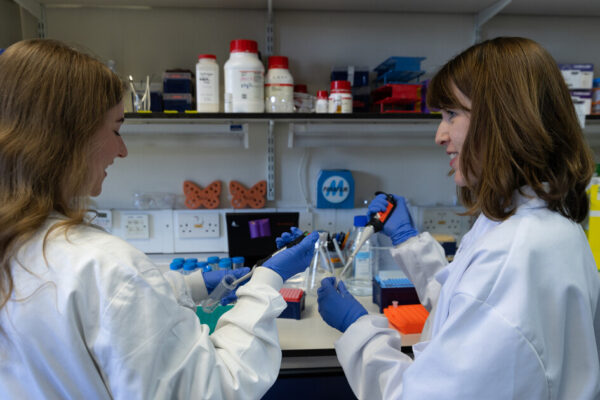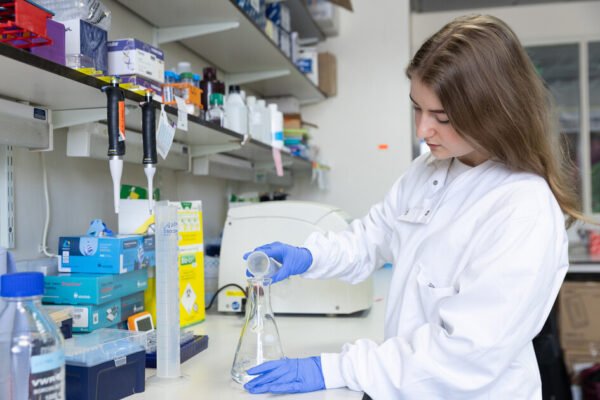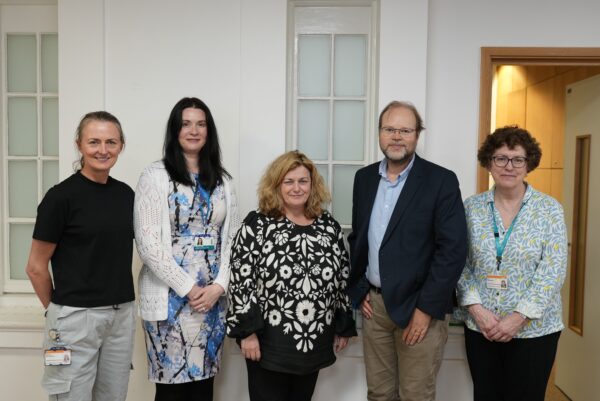New research has found that exercise may affect muscle cells differently in males and females with facioscapulohumeral muscular dystrophy (FSHD). These early findings could help researchers explore why men are more severely affected, and guide future studies into more personalised treatment approaches. The study was led by Dr Yusuke Nishimura in Professor Jatin Burniston’s lab at Liverpool John Moores University, in collaboration with Dr Yi-Wen Chen’s team at George Washington University in the US.
Study begins to uncover how exercise affects muscles in FSHD

What is Facioscapulohumeral Muscular Dystrophy?
Facioscapulohumeral Muscular Dystrophy (FSHD) is the third most common muscular dystrophy. It affects more than half a million people worldwide and while there is currently no cure, researchers are working hard to find effective treatments. FSHD causes the gene DUX4 to activate when it shouldn’t. This leads to a harmful build-up of the DUX4 protein, which causes muscle damage and weakness.
Researchers are still working to understand exactly how DUX4 causes this damage. One important area they’re exploring is how other proteins in the cell are affected.
Why are proteins important?
Proteins are like the machines within our cells. Each protein has a particular role, such as to build, repair, or keep everything working smoothly in our cells. Without proteins, our cells can’t function properly. Proteins are constantly being made and broken down in a process called protein turnover. This allows cells to adapt to changing conditions, like stress, injury or exercise.
One of the most important parts of our cells is the mitochondria. These are like little batteries that produce the energy our cells need to function. Whether we’re walking, exercising, thinking, or even sleeping, mitochondria are working behind the scenes to keep us going.
To do their job, mitochondria rely on lots of different proteins. These proteins help them make energy efficiently. Just like other proteins in the body, mitochondrial proteins need to be replaced regularly to keep everything running smoothly.
What’s different in FSHD?
Previous research has shown that FSHD muscle cells have more mitochondrial proteins, but these proteins aren’t replaced as quickly as they should. This slower turnover means old or damaged proteins might build up. Over time, this could make the mitochondria less efficient at producing energy and potentially lead to muscle weakness seen in FSHD.
With this in mind, researchers are now exploring ways to help mitochondrial proteins function more effectively.
How exercise affects our cells
One promising idea comes from what we already know about exercise. When we exercise, our bodies need more energy. This sends a signal to our cells to make changes – especially in the mitochondria. The cells start producing more mitochondrial proteins and breaking down the old ones faster. This helps the mitochondria work better and produce the energy needed.
That’s why regular aerobic exercise (like walking, swimming, or cycling) can actually improve how well our mitochondria work.
Since research suggests mitochondrial proteins may not function as efficiently as they should in people with FSHD, researchers wanted to find out whether exercise could help – or whether the response to exercise is different in FSHD muscles. As a first step, they looked at whether exercise changes the number of mitochondrial proteins in FSHD muscle, similar to what happens in muscle without the condition.
Exercise and FSHD
To explore this idea, researchers used mice with genetic changes that mimic FSHD. They gave the mice access to running wheels to simulate aerobic exercise.
They found that:
- In female FSHD mice, mitochondrial proteins increased after exercise – suggesting a healthy response.
- But in male FSHD mice, this increase didn’t happen.
- In contrast, mice without FSHD showed no difference between males and females.
This suggests that while increasing mitochondrial proteins is a normal response to exercise, male FSHD mice didn’t respond in the same way. This difference might be important.
In fact, it’s already known that men with FSHD often experience symptoms earlier and more severely than women. So, this finding might help explain why – and could point to the need for tailored exercise programmes based on sex.
While this research doesn’t tell us whether the proteins are working better, it helps lay the groundwork for future studies into how exercise might support mitochondrial function in FSHD.
Future directions in FSHD research
This study adds to the growing conversation around how lifestyle factors like exercise might influence FSHD. By showing that aerobic exercise can change the levels of mitochondrial proteins in muscle, and that this response may differ between males and females, it opens the way to new questions about how exercise could be used as part of future therapies.
While these early findings are promising, they come from a mouse model of FSHD. More research is needed to understand whether similar changes happen in human muscle, and whether they lead to meaningful improvements in mitochondrial function or muscle strength. Exploring how different types of exercise affect muscle health, and whether responses vary between people, will be key to developing more targeted and effective approaches. Over time, this could help lead to more personalised care for people living with FSHD.


